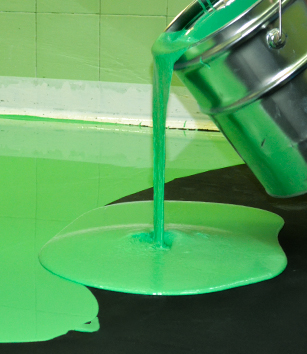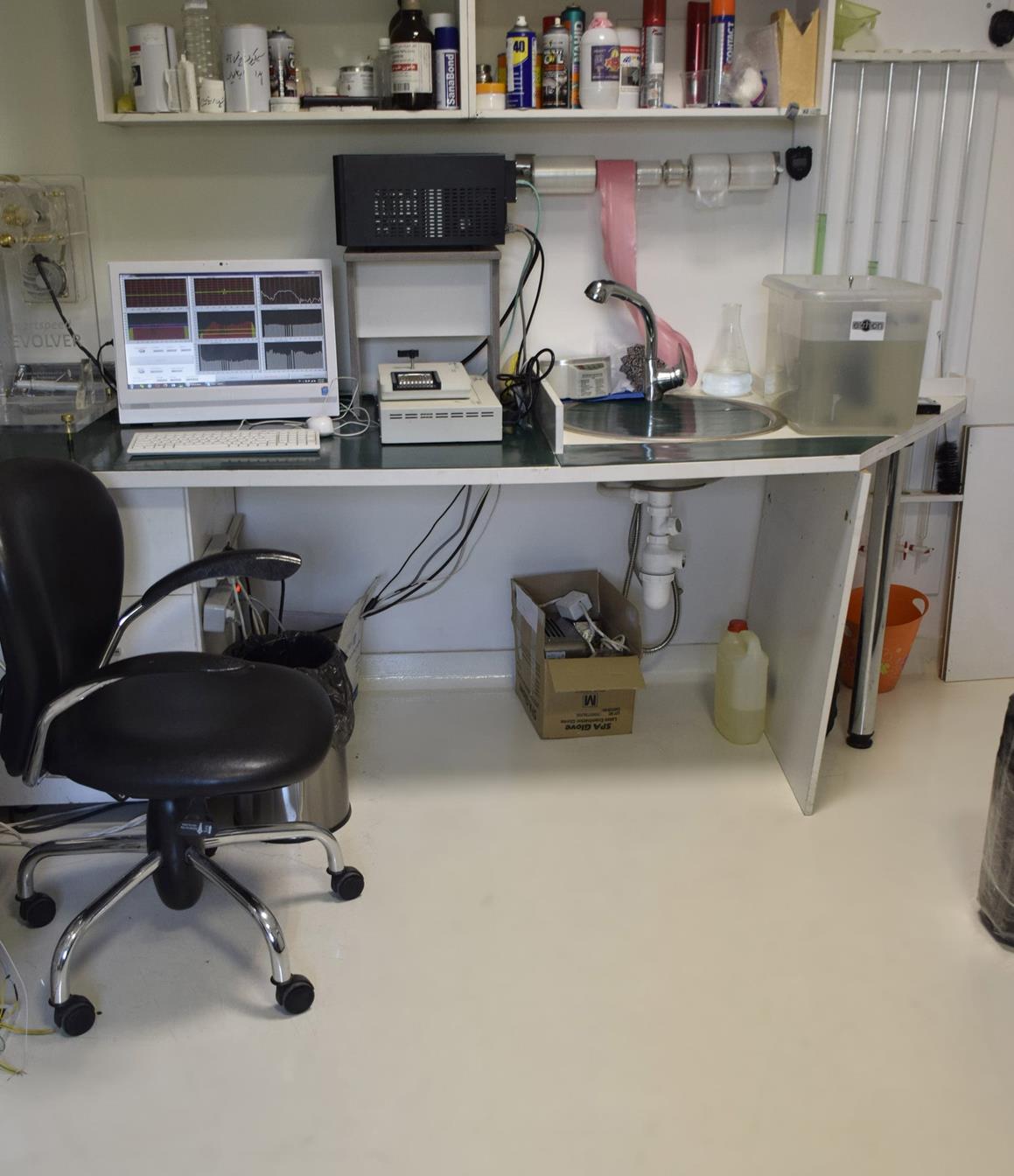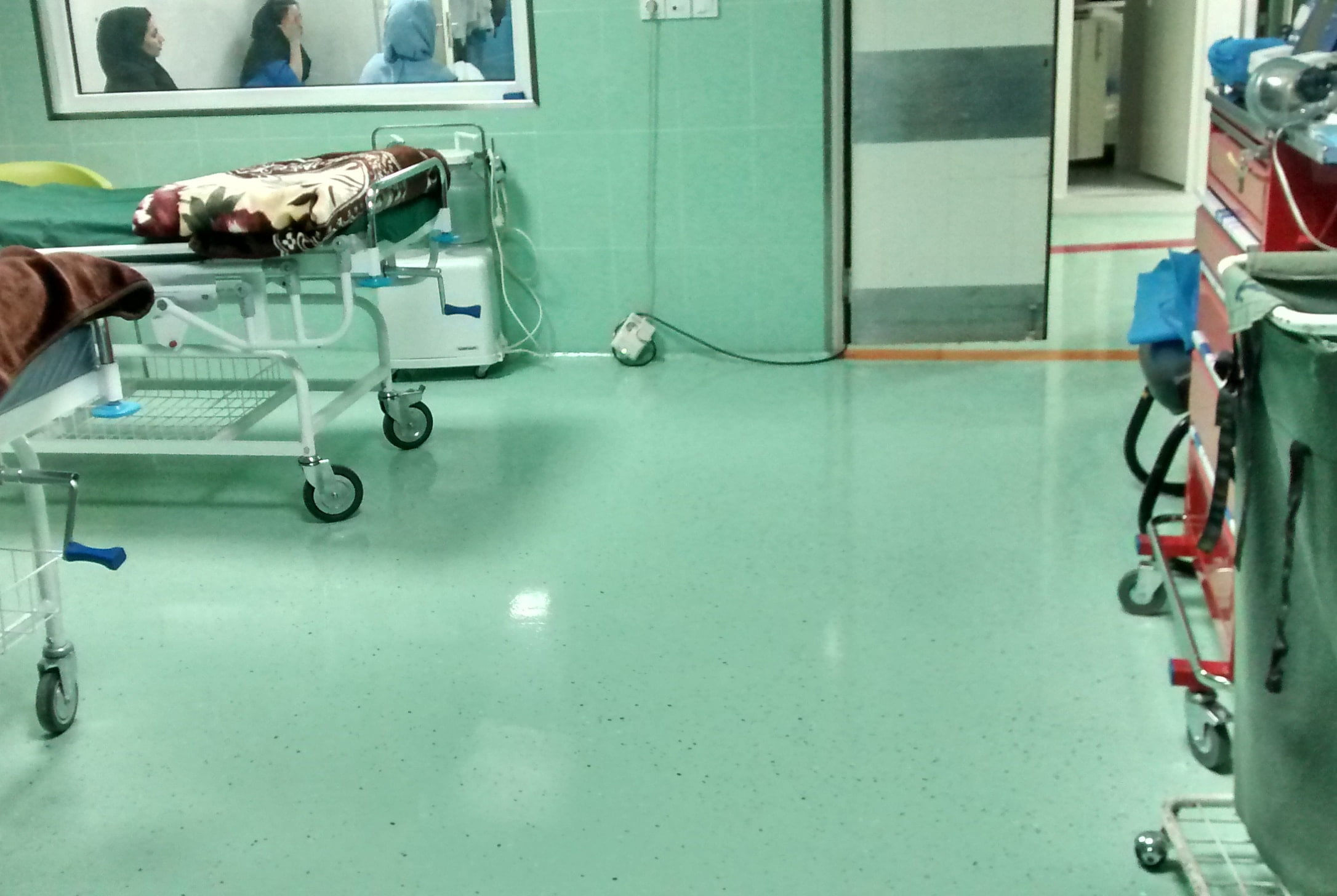Description
What is Antistatic Epoxy Flooring? The discharge of static electric charge is actually a spark that occurs due to the contact of a charged surface with the surface of a conductive object. This extremely fast transfer, which was previously a kind of static charge, may lead to fire and explosion, or generate heat, light, and sound. Also, active electronic equipment such as microchips, integrated circuits, and machines are sensitive to the phenomenon of electrical discharge. Even when the environment and people are equipped with anti-electricity protective equipment and clothing, when working with devices sensitive to static electricity, there is a possibility of unwanted contact and creating a dangerous incident.
Therefore, for greater safety, this spark must be prevented. In general, concrete surfaces have enough electrical conductivity due to the humidity in them and are considered a kind of anti-static flooring. This is despite the fact that most Hospital flooring and medicinal roll and resin flooring ( Epoxy flooring، polyurethane flooring, MMA) which are applied on the concrete surface, are electrically insulated.
What is Antistatic Epoxy Flooring?
Antistatic resin flooring, such as antistatic and conductive flooring in the operating room and electrical room, has the ability to prevent the discharge of electrostatic charge or sparks.
Anti-static epoxy floor coverings transfer static electric charge through conduction (conduction of electric charge) or prevent danger by dissipating it (semiconductor floors). Based on this, when buying hospital flooring, one should pay attention to the type and amount of electric charge conducted by it. For example, using hospital antistatic resin flooring as ⇐ operating room flooring or clean room flooring is a good choice, and there is no need to use conductive flooring for the Operating room. However, it is recommended to use conductive flooring when buying flooring for an electrical room or computer server room.
Basepolymer antistatic floors are specially designed to distribute static electricity and are suitable for use in environments where sensitive equipment is used, including electronic industries (such as electrical and server rooms) or chemical industries.
Applications of Antistatic Flooring
The most important places of application of anti-static/conductive/anti-static Basa Polymer flooring:
1. Hospital flooring (operating room/radiology/clean room flooring)
2. Explosive warehouse floor (anti-static floor)
3. Clean room flooring (anti-static flooring)
4. Industrial flooring
5. Conductive flooring (server room flooring/ electrical room flooring/ electronic offices)
What are the types of Antistatic Flooring?
Conductive electrostatic flooring:
Conductive electrostatic flooring refers to flooring that has relatively low electrical resistance and quickly discharges its charge by connecting it to the ground or a conductive object with a lower potential. And it conducts electric current. The electrical resistance of this type of flooring is less than 106 ohms. (106-104×2.5 Ohm)
The main difference between conductive flooring and antistatic flooring is the electrical resistance of each flooring, in other words, their resistance to the discharge of electric charge. According to the tests and studies conducted, antistatic flooring has more resistance to electric charge-discharge (the resistance of conductive flooring is less than one million ohms and the resistance of antistatic flooring is between one million and one billion ohms).
The flooring of electronic industries: in the work environment, personnel, machines, tools, and other components are all connected and this interaction causes the accumulation of static charge and ultimately its discharge. This electrostatic discharge is not always accompanied by a spark, and sometimes with the release of a small static charge, it can ignite sensitive chemicals in the work environment. ESD floor coverings, especially resin antistatic floor coverings, are designed and produced in order to reduce the accumulation of static charge on the floor, spread the static electricity on the surface of the floor covering, and finally transfer it to the earth well.
Dissipative Floor :
Astatic Floor :
Flooring is said to minimize the load generated by the contact and re-separation of two or more surfaces. This flooring is not necessarily conductive electrostatic flooring or dissipative flooring. Static floors are used for domestic and public applications and are described by the voltage of a person walking on the floor, which must be less than 2 kV in measurements made in the manner indicated in the standard. (<109 ohms)
Antistatic floors are also divided into the following types based on the type of materials used:
Antistatic resin flooring, including antistatic epoxy flooring and antistatic polyurethane flooring
PVC flooring in rolls and tiles
Components of Antistatic Flooring
• Substrate: It is like other epoxies and the only difference is the installation of a mechanism to connect the flooring to the building’s earth well. In the foundation, a very important point is to create a perfectly level substrate to achieve the maximum quality of antistatic flooring.
• Copper grid: to transfer electricity to the earth well, it is glued to the floor using epoxy putty after proper foundation. It is very important to observe the distances of these networks based on the dimensions of the space and the requested electrical resistance.
• Conductive primer is applied on the surface of the copper grid: the purpose of applying this primer is to connect the final coating with the copper grid placed between the floor covering layers. It is very important to ensure uniform and complete coverage by the antistatic primer at this stage.
• Self-aligning topcoat coating is applied in the form of a comb with a thickness of one to one and a half mils. The material of this layer also has electrical resistance in the antistatic range.
The steps of installing and implementing conductive Epoxy Flooring:
2- Creating a copper network with distances proportional to the required electrical resistance and considering the output of the network to connect to the Earth;
3- applying antistatic epoxy primer using a roller;
4- Application of conductive or anti-static self-leveling epoxy coating using combed squeegee and air intake roller;
Features of Flooring
The advantages of antistatic flooring are as follows:
• Transferring the static electric charge to the earth well and preventing the sudden discharge of static electricity and sparking
• Variation in design and color
• Integrated and seamless, anti-dust, waterproof, and easy to clean
• Protection of personnel and equipment
Among the disadvantages of these floorings, we can mention the sensitivity during implementation. Of course, this issue can be prevented by observing the technical points of the flooring implementation announced by the supplier and also by taking the help of an experienced contractor.
Buy Antistatic Epoxy Flooring
Anti-static epoxy primer BASADUR®-E103 is based on standard epoxy resin with an amide and polyamine hardener mixture, contains solvent and additives with electrical conductivity, which is designed in such a way that it has the ability to conduct and transmit bioelectricity in various industries.
Two products BASADUR® E325, BASADUR® E326 are self-leveling epoxy coatings based on epoxy resin and polyamine hardener with a surface electrical resistance in the range of 106-109 ohms, which is applied as a final layer and self-leveling on the anti-static epoxy floor surface.
Therefore, the price of antistatic epoxy flooring, the type of material chosen, the amount of material used, and the infrastructure of the project are also influential.
The electrical resistance of flooring
According to the standard, the electrical resistance of anti-static flooring should be in the range of 106-109 ohms.
To ensure uniform and complete coverage by the primer and coating, as well as to ensure that the level of electrical resistance in the antistatic range is achieved, the surface electrical resistance test of the epoxy flooring must be performed at every stage.
Read more:





Reviews
There are no reviews yet.